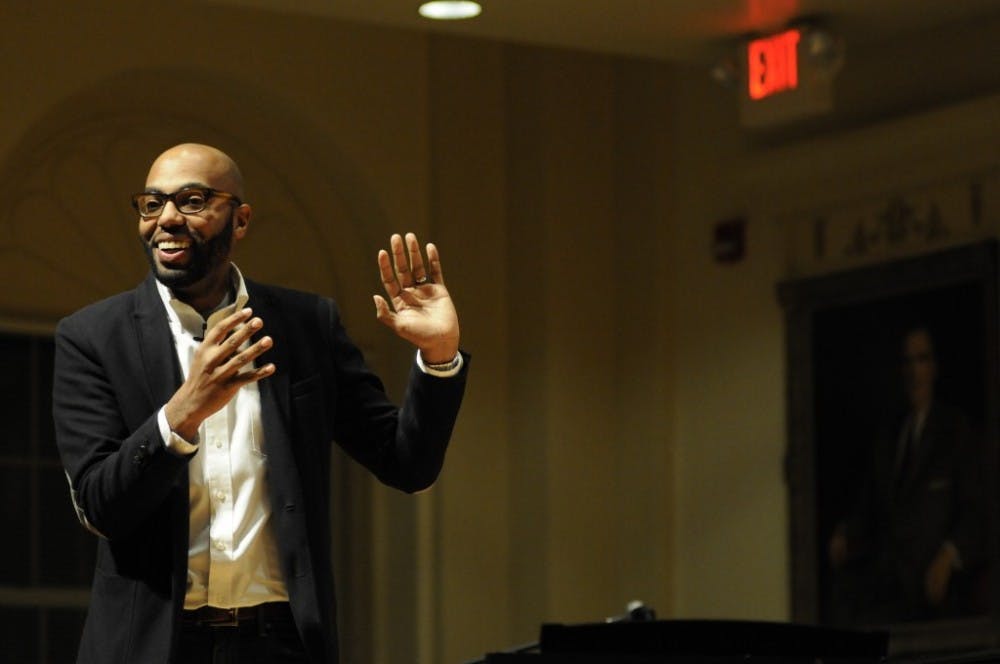“The stem with no root bears no fruit.”
That is Dr. Christopher Emdin’s allegory for his critiques of the educational system in the United States. Emdin spoke of a disconnect between what he calls marginalized students and their educators.
“Will you ever have fruit if you don’t plant? You have to go underground to plant.”
Emdin’s presentation, “Reality Pedagogy: Teaching and Learning from the Student’s Standpoint” was held March 7 in Whitley Auditorium at Elon University. Elon Teaching Fellows, School of Education and Kappa Delta Pi sponsored the occasion.
A current assistant professor in the department of mathematics, science and technology at Teacher’s College, Columbia University, Emdin has served K-12 education in various roles. He also co-founded the Marie Curie School for Medicine, Nursing and Allied Health Professions in the Bronx, New York. His research focuses on urban and multicultural education.
Emdin said he authored a book called Urban Science Education for the Hip-Hop Generation, which details his theory that school systems should adopt some of the social conventions practiced in the hip-hop culture. A main component of this theory, said Emdin, is for teachers to create a social classroom environment that transcends traditional American schooling. He said his theory especially applies to overlooked students.
“(Students) are not learning in traditional classrooms,” he said. “The people that are successful in the marginalized populations are successful in spite of the classroom systems – not because of them. They are anomalies.”
Emdin said the neglected students would thrive in a classroom where the teacher is engaged and their teaching methods are transparent and flexible.
“Education is about truth,” he said. “Truth in the reality of what is happening in the classroom and the understanding of the learning process.”
Educators need to express some degree of vulnerability, Emdin said. He clarified that teachers need to be honest with their students about what they themselves do not know. This will create an underlying layer of trust. Emdin also said teachers should incorporate community locations in class examples –content in familiar context – to foster trust with their students. Emdin suggested personalizing the classroom with a name other than what is written on its door.
“Make the classroom a (social) space,” he said. “A pseudo-family.”
Emdin advocates co teaching – having students teach their peers with their own personal methods. He said social media, a popular form of idea distribution in the current generation, is underused in schools.
“Why can’t students make the lesson plan? As a teacher you are an expert of content. Students are the experts of delivery.”
A staple of hip-hop culture, Emdin related graffiti art’s origins to a students’ accepted lack of participation in a traditional school environment.
“Even though in the classroom they were silent and nobody knew their name, the graffiti would bring them eternal fame across the city,” he said. “It gave them a voice.”
Emdin shared his personal experience in the educational system after showing a slide of a generic, disinterested-looking student. Although not actually a picture of Emdin, he said he connected with the core image.
“That’s me. I was thinking what’s next in this place because I want to get out of here. I learned that if I stayed out of the way I wouldn’t have to work.”
Educators, according to Emdin, need to be subjective, stylized and creative. The classroom should be a communal space with feedback from the desks as well as the front of the room, Emdin said.
“Teaching is not apolitical. Teaching is not ignoring those (age and cultural difference) issues. Teaching addresses those issues.”


